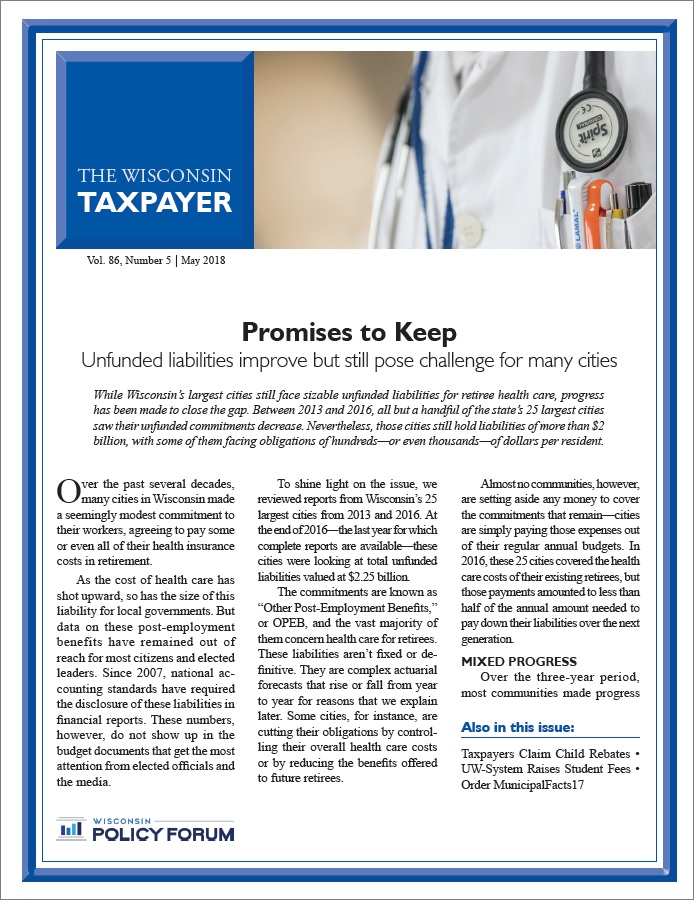
While Wisconsin’s largest cities still face sizable unfunded liabilities for retiree health care, progress has been made to close the gap. Between 2013 and 2016, all but a handful of the state’s 25 largest cities saw their unfunded commitments decrease. Nevertheless, those cities still hold liabilities of more than $2 billion, with some of them facing obligations of hundreds – or even thousands – of dollars per resident.
Over the past several decades, many cities in Wisconsin made a seemingly modest commitment to their workers, agreeing to pay some or even all of their health insurance costs in retirement.
As the cost of health care has shot upward, so has the size of this liability for local governments. But data on these post-employment benefits have remained out of reach for most citizens and elected leaders. Since 2007, national accounting standards have required the disclosure of these liabilities in financial reports. These numbers, however, do not show up in the budget documents that get the most attention from elected officials and the media.
To shine light on the issue, we reviewed reports from Wisconsin’s 25 largest cities from 2013 and 2016. At the end of 2016 – the last year for which complete reports are available – these cities were looking at total unfunded liabilities valued at $2.25 billion.
The commitments are known as “Other Post-Employment Benefits,” or OPEB, and the vast majority of them concern health care for retirees. These liabilities aren’t fixed or definitive. They are complex actuarial forecasts that rise or fall from year to year for reasons that we explain later. Some cities, for instance, are cutting their obligations by controlling their overall health care costs or by reducing the benefits offered to future retirees.
Almost no communities, however, are setting aside any money to cover the commitments that remain – cities are simply paying those expenses out of their regular annual budgets. In 2016, these 25 cities covered the health care costs of their existing retirees, but those payments amounted to less than half of the annual amount needed to pay down their liabilities over the next generation.

